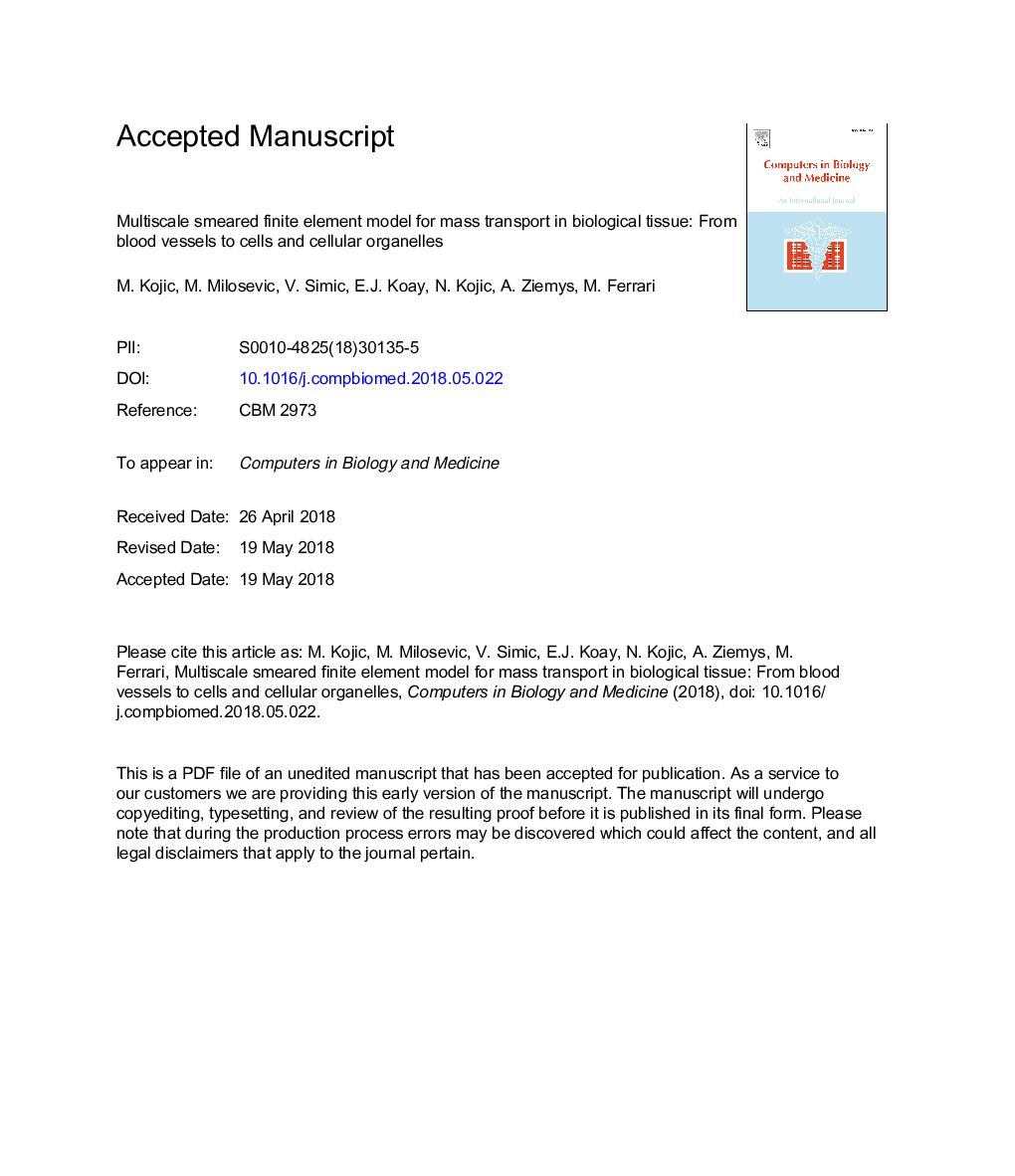| Article ID | Journal | Published Year | Pages | File Type |
|---|---|---|---|---|
| 6920447 | Computers in Biology and Medicine | 2018 | 42 Pages |
Abstract
One of the basic and vital processes in living organisms is mass exchange, which occurs on several levels: it goes from blood vessels to cells and organelles within cells. On that path, molecules, as oxygen, metabolic products, drugs, etc. Traverse different macro and micro environments - blood, extracellular/intracellular space, and interior of organelles; and also biological barriers such as walls of blood vessels and membranes of cells and organelles. Many aspects of this mass transport remain unknown, particularly the biophysical mechanisms governing drug delivery. The main research approach relies on laboratory and clinical investigations. In parallel, considerable efforts have been directed to develop computational tools for additional insight into the intricate process of mass exchange and transport. Along these lines, we have recently formulated a composite smeared finite element (CSFE) which is composed of the smeared continuum pressure and concentration fields of the capillary and lymphatic system, and of these fields within tissue. The element offers an elegant and simple procedure which opens up new lines of inquiry and can be applied to large systems such as organs and tumors models. Here, we extend this concept to a multiscale scheme which concurrently couples domains that span from large blood vessels, capillaries and lymph, to cell cytosol and further to organelles of nanometer size. These spatial physical domains are coupled by the appropriate connectivity elements representing biological barriers. The composite finite element has “degrees of freedom” which include pressures and concentrations of all compartments of the vessels-tissue assemblage. The overall model uses the standard, measurable material properties of the continuum biological environments and biological barriers. It can be considered as a framework into which we can incorporate various additional effects (such as electrical or biochemical) for transport through membranes or within cells. This concept and the developed FE software within our package PAK offers a computational tool that can be applied to whole-organ systems, while also including specific domains such as tumors. The solved examples demonstrate the accuracy of this model and its applicability to large biological systems.
Keywords
Related Topics
Physical Sciences and Engineering
Computer Science
Computer Science Applications
Authors
M. Kojic, M. Milosevic, V. Simic, E.J. Koay, N. Kojic, A. Ziemys, M. Ferrari,
